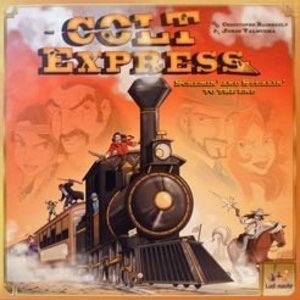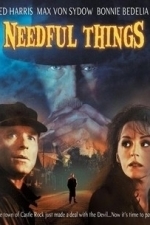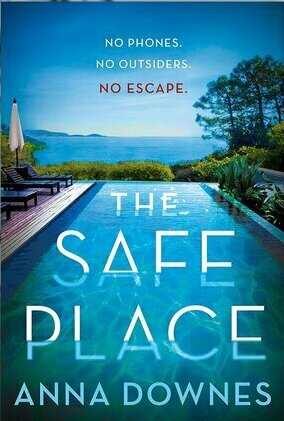Darren (1599 KP) rated Needful Things (1993) in Movies
Aug 29, 2019
Story: Needful Things starts when Leland Gaunt (von Sydow) opens up an antique shop in the small town of Castle Rock, the shop known as Needful Things, see the locals visit, with them getting an unusually attachment to certain items in the shop, items that are clearly meant for each individual person, one that strikes a memory.
As the town starts flocking to the shop, it becomes clear that Leland has alternate plans for the town, with Sheriff Alan Pangborn (Harris) needing to investigate a new increase amount of small crimes, which slowly start to build in seriousness before the town turns to chaos.
Thoughts on Needful Things
Characters – Leland Gaunt is the mysterious shopkeeper that arrives to Castle Rock, his shop has everything the people of the town want and he knows everything about everyone in the town. He trades their desires for favours, which mostly involve going against people in the town, he knows how to remain calm through the conversations, knowing just what they want to hear. Sheriff Alan Pangborn left the big city for a quiet life, he is enjoying his life in the town, with his new fiancée, until the crime levels start to rise, which sees him going from dealing with cats in trees, to murders, can he stop the power Leland has over the town before it is too late. Polly is Alan’s fiancée, she runs the local diner opposite the new shop, she doesn’t run in like some of the other residents, which sees her witnessing the changes from the locals. Nettie is a shy former abuse victim that becomes one of the first customers of the shop, showing how easily people can like what he is willing to offer. We do get a string of people that start to get caught in his ideas.
Performances – Max von Sydow is wonderful to watch in this film, he gives the character the mystery and charisma he needs to seem like a friendly person. Ed Harris is always good to watch, here he does the small town cop routine with ease, playing a good man who must help his people. Bennie Bedelia is strong without getting enough important early scenes to make us understand how disturbed her character’s life is.
Story – The story here follows a small town that gets a new visitor in a shopkeeper that soon starts giving the locals everything they ever wanted, for a price, which sees the town turn to chaos and the sheriff needing to solve the problem before it is too late. This is one of the most interesting of the Stephen King stories, it looks at human desires taking control over our own sanity, how one town can be turned upside down by the ideas of what could be ours, rather than giving us what we need. The story is shown to unfold at a delightful pace because it shows how the deals are put in place with each deal, slowly starting to growing from disruptive behaviour right up to murder. The story does rely on the idea of town working together to prove themselves.
Fantasy/Horror – The fantasy side of the film shows just how Leland can bring about whatever the person in the town wants, he can make the impossible, possible, which only plays into the horrors of just what he can do to this world, when people get everything they ever wanted.
Settings – The film is set in the small town of Castle Rock, this is one location where everybody knows each other, which is one of the trademarks for any Stephen King novel.
Special Effects – The effects in the film are very simple, they do play into the idea of fantasy elements, when we see just what will happen with the power given to the people.
Scene of the Movie – He is a monster.
That Moment That Annoyed Me – It does feel like it could have gone a lot darker.
Final Thoughts – This is easily one of the more underrated of Stephen King’s adaptions, it gives us a perfect moral dilemma and keeps everything feel a lot more grounded for a horror one.
Overall: Entertaining throughout.

UK Social - British Dating App. Chat & Meet Single
Lifestyle and Social Networking
App
Millions of straight, gay and lesbian singles count on us to find the man or woman they want to...

3D Make.Up Salon Girls Game.s: Fashion Dress.up Stylist and Beauty Model Make.over
Lifestyle and Games
App
* Are you ready for the ultimate makeup games for girls? Apart from that, you also want cute girls...

Timeline Cover Photo Maker Free - Design and create your own custom Facebook profile page covers that reflects your personality!
Photo & Video and Social Networking
App
The App Store's most popular Cover Photo Making App for your Timeline now has a FREE version! ...
Heather Cranmer (2721 KP) rated The Safe Place in Books
May 30, 2020
Emily Proudman just can't catch a break. After losing her job as well as her acting agent, things are looking grim. After being late on the rent again, she's also facing eviction from her apartment. However, things start looking up when she runs into Scott Denny. Scott, a successful CEO of the company she's just been fired from, feels like Emily would be perfect working for his wife, Nina, and living on their very remote property in France. Things seem perfect, but they are a little too perfect. When Emily finds out the truth behind Nina's and Scott's ideal life, she puts herself in grave danger and finds out how far some people will go to protect their secrets.
While the idea behind The Safe Place has been done before, Downes does a fantastic job of making it feel like it was her idea and hers alone. To me, The Safe Place felt like it was a slow burn as the action didn't really take place until towards the end. I would say the first 85 percent of the book or so is just the backstory and build up to all the action which happens in the last few chapters. The pacing is a little slow throughout most of the book, but it isn't so slow that I became bored - quite the contrary. While the pacing is fairly slow, I did enjoy what I read thanks to Downes' brilliant way with words. There are a few plot twists although I found them fairly easy to figure out, but I think that's only because I've read so many psychological thrillers before. Some of my guesses were wrong though, I admit. Even though there's an epilogue, I would have liked to have known more about what happened with Denny family. I just need a little more closure when it came to that.
Downes did a fantastic job with all of her characters. It was easy to imagine every single character in The Safe Place as a real person. The main characters all had plenty of backstory (or just enough to keep them mysterious), and the minor characters were all described very well. I liked how Emily seemed to want to please those around her. While she didn't feel like a pushover, it was nice to see her wanting to fit in with her new employer as well as Yves, the sometimes handyman. Nina was definitely an interesting character. I didn't know what to make of her before Emily met her in the book, but once Emily met Nina, and I read more about her, I ended up liking her. (I kept trying to figure out why Scott didn't want to be around her though.) Aurelia, the Denny's daughter, was my favorite character. She seemed like such a sweet little girl who had been through so much. I found myself wishing I could meet Aurelia and give her a hug (only if she'd let me since she took a long time to warm up to people).
Trigger warnings for The Safe Place include profanity, mental illness, alcohol use, prescription pill abuse, self harm, violence, and attempted murder.
Overall, The Safe Place is a highly intriguing book that makes each and every word on the page come alive. With a great set of characters, beautiful descriptions of the scenery, and a highly intriguing plot, this is one book that's sure to become a best seller. I would definitely recommend The Safe Place by Anna Downes to those aged 20+ who enjoy psychological thrillers and/or want to be instantly transported into a fantastic book!
--
(A special thank you to Minotaur Books for sending me a paperback ARC of The Safe Place by Anna Downes. A review was not required but appreciated. This was my honest and unbiased review.)

Recipe Book : Christmas Dinner Recipes Cookbook
Food & Drink and Book
App
My recipe box is the only amazing recipes app where you will learn to make all kinds of delicious...

Talabat: Food Delivery
Food & Drink and Lifestyle
App
Hungry? The biggest Online Food Delivery App is Now in Your Pocket! Ordering food online made...

Ultimate Horse Simulator
Games and Education
App
Gallop into a brand new adventure as a beautiful wild Horse! Live wild and free in a gorgeous new...

Ultimate Wolf Simulator
Games and Education
App
Jump into a brand new adventure as a wild Wolf! Survive in a massive world of wilderness that’s...

Colt Express
Tabletop Game
On the 11th of July, 1899 at 10 a.m., the Union Pacific Express has left Folsom, New Mexico, with 47...
BoardGames AwardWinningGames PartyGames WildWestGames

